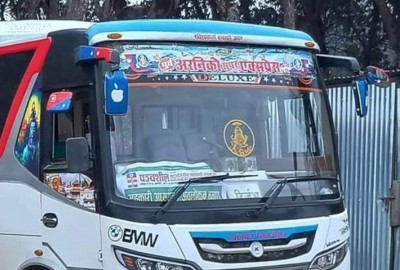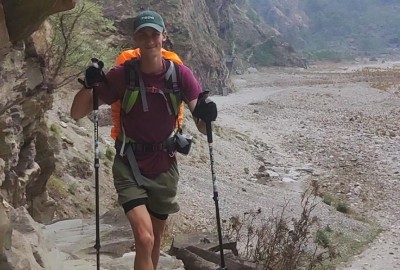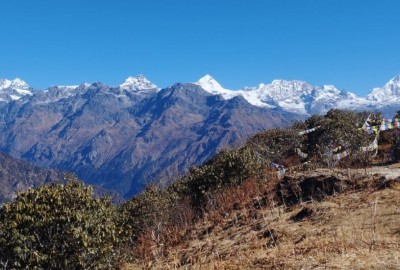Kathmandu is the capital of Nepal and is the largest city. While once Kathmandu was thought to be inaccessible and was fabled as Shangri-La, it has now become part of one of the biggest urban areas in Nepal due to the rapid urban growth in recent decades. It is an iconic spot for independent travelers as well as an enjoyable vacation spot.
Table of Contents
Plan your trip to Nepal
Customize your trip with help from a local travel specialist.
According to legends, Kathmandu Valley was founded after draining a large lake and a shrine or two can be found in every street. With amazing diversity, incredible architecture, exquisite wood carvings and metal craft which shows the talent of Newar artisans, Kathmandu valley is an amazing place to be in. From time immemorial, Hinduism and Buddhism have coexisted inside Kathmandu valley. Hindu and Buddhist shrines are given less distinction as the people from the valley worship both.
While modern technology is being adapted into Kathmandu, the ancient traditions are guarded and respected. The magnificence of the past is what makes the visitors' sight linger on the spiritual stupas, an 18th-century bronze sculptures or impeccably carved wooden window frames scattered across the old city. Nepalese from all corners of the country come to live here as the largest city in Nepal, Kathmandu is the political as well as cultural capital of the country.
Like any other huge city, Kathmandu has seen a tremendous amount of expansion in the last decade. Despite all of the expansion and the fast life of a city, the people are quite friendly towards visitors. Following traditions of the past, Kathmandu is still blessed by the Living Goddess Kumari who is chosen from the Newari Shakya clan and is a little Buddhist girl representing the powerful Hindu Goddess Taleju.
The city life is enhanced by endless ceremonial processions and events that take place in the street every now and then. Hordes of people take to the streets to take part in the spiritual celebrations. With masked dancers who are often said to be possessed by the spirits of deities, and with chariot processions, these religious festivals are immersed in folklore and are quite a phenomenon.
Lying in the heart of Kathmandu valley is a UNESCO World Heritage Site, Kathmandu Durbar Square, which was also the former royal palace. A number of pagoda style temples that boast of excellent craftsmanship in metal and wood accompanies the palace. The Living goddess's residence is nearby and the famous freak street is just a wee bit away. But nowadays people prefer Thamel which has evolved into a thriving tourist destination that offers anything from luxurious to cheap hotels, eateries, bars to travel agencies, money exchange centers, night clubs, yoga and meditation classes, massage parlors, live music hubs and many more. International cuisine ranging from Italian to Korean, Thai, Chinese, Indian, Japanese to Mexican is available within the vicinity.
Three of the prominent religious pilgrimage sites listed in the World Heritage Site are found here. They are Pashupatinath, Boudha, and Swayambhu. With numerous smaller shrines and festivals paired with centuries-old places of worship makes Kathmandu a living museum. It provides an opportunity to travel back in time while still living in the 21st century.
Places to see in Kathmandu
Hanuman Dhoka
Hanuman Dhoka is Kathmandu's royal palace and was originally founded during the Licchavi period (4th to 8th centuries AD). During the 17th century, King Pratap Malla expanded the compound. But the 2015 earthquake did devastating damage to the palace.
The palace is a mansion with a view that is magnificent on the inside as well as outside. During the events of Ramayan, Hanuman’s assistance to the noble Rama has led to the appearance of the monkey god in all important entrances for protection. A Hanuman statue cloaked in red and sheltered by an umbrella marks the entrance of Hanuman Dhoka Palace. The name of the palace is also inspired by the monkey god. While the origin of the statue dates back to 1672, the monkey god's face has disappeared under the thick layers of red and yellow vermillion paste put on by the devotees.
Gaudy stone lions ridden by Lord Shiva and his wife Parvati are on each side of the gate while stands which bear the Nepali flag flank the statue. A tantric version of Lord Krishna is situated in the center of the illustration that is vividly painted above the gate. The gentler side of Hindu Lord Krishna is on the left side of the painting in his traditional blue color next to his two milkmaids (gopi). King Pratap Malla and his queen are on the other side of the illustration.
While Hanuman Dhoka originally used to house 35 courtyards, now only 10 courtyards remain after the devastation done by the 1934 earthquake.
Garden of Dreams
Swapna Bagaicha or Garden of Dreams is a beautifully restored garden situated in Kaiser Mahal of Thamel. It is one of the most peaceful and calm places in Kathmandu. While it is merely a two-minute walk from central Thamel, the place will take you a million miles away from Thamel.
The garden of built-in 1920s after field marshal Kaiser Shamser's visit to several Edwardian estates in England. Marshal Kaiser used the funding of Rs 100,000 he won from his father during a game of cowrie shells to build this garden. The gardens were brought to life over a six-year period by an Austrian-financed team that created the Patan Museum after years of negligence.
Six pavilions honoring the six Nepali seasons stand inside the garden. In the garden, there are plenty of benches and seats where you can sit, relax and hang out. You can also curl up on the green lawn, with a good book. The garden is usually filled with more Nepali visitors than tourists and usually has friends who are there for an outing or couples looking for some seclusion. The gardens have been well-tended in 2018 and 2019 so it has added to the appeal of the compound. If you manage to take a mat or a picnic blanket to place on the ground, you can sit on it and have a little picnic of your own. In the Kaiser cafe, you can order a coffee or a meal. You can also visit the tiny museum if it’s open and the Kaiser gallery or if you don't feel like doing much, you can just sit under the shade of one of the pavilions. Ice creams and cakes can be found in the Barkha bar while exclusive Himalayan tea is served in the Tea Salon.
Ason Tole
The six-spoked junction of Ason Tole is jam-packed with vegetable and spice vendors selling everything from yak tails to dried fish from dawn to dusk. If you can stand the crowd, it is one of the most fascinating places to linger in. It is also the busiest square in the whole city. 'Kathmandu' by Cat Stevens was allegedly written here in a smoky teahouse in Asan Tole.
Products from all around the valley are brought here every single day so it is befitting that a temple dedicated to the goddess of abundance is built here. The temple is a three-story monument named Annapurna and lies in the Southeast corner. A bowl full of grain and a silver Purana is the representation of Annapurna. You will occasionally see locals walking around the shrine throwing a coin into the temple after touching their heads with the coins and ringing the bells.
Nearby is the bathroom tiles coated red-faced Ganesh shrine. Once used for festive dances, the historic Yita Chapal was damaged in the 2015 earthquake. It now stands supported by buttresses.
Spice shops are located on the western side. Two potted trees and a shrine in the form of Vishnu called Narayan is in the center of the square.
Indra Chowk
Named after the ancient Vedic deity, Indra, the hectic streets of Makhan Tole leads into Indra Chowk. The locals crowd around the newspaper sellers in the square reading fresh news. Indra Chowk is mainly a center for selling cloth and blankets. To the north, the platforms of Mahadev Temple is usually covered by merchants. A smaller and simplified version of the Krishna Mandir (Temple) of Patan is on the northeast side of the Mahadev temple. It is a small black stone Shiva temple.
Akash Bhairab Temple or the Bhairab of the Sky Temple is on the west side of the square. Four metal lions are on the balcony and can be seen from the streets. Two brass lions guard the entrance of the temple which is on the right-hand side of the building but non-Hindus are not allowed in. During important festivals, the silver image is shown in the square but usually, it remains inside. A small brass Ganesh shrine is on the left side of the Akash Bhairab Temple.
A market mostly visited by married Nepali women as it sells lurid beads and bangles is hidden in the alleyways to the east.








